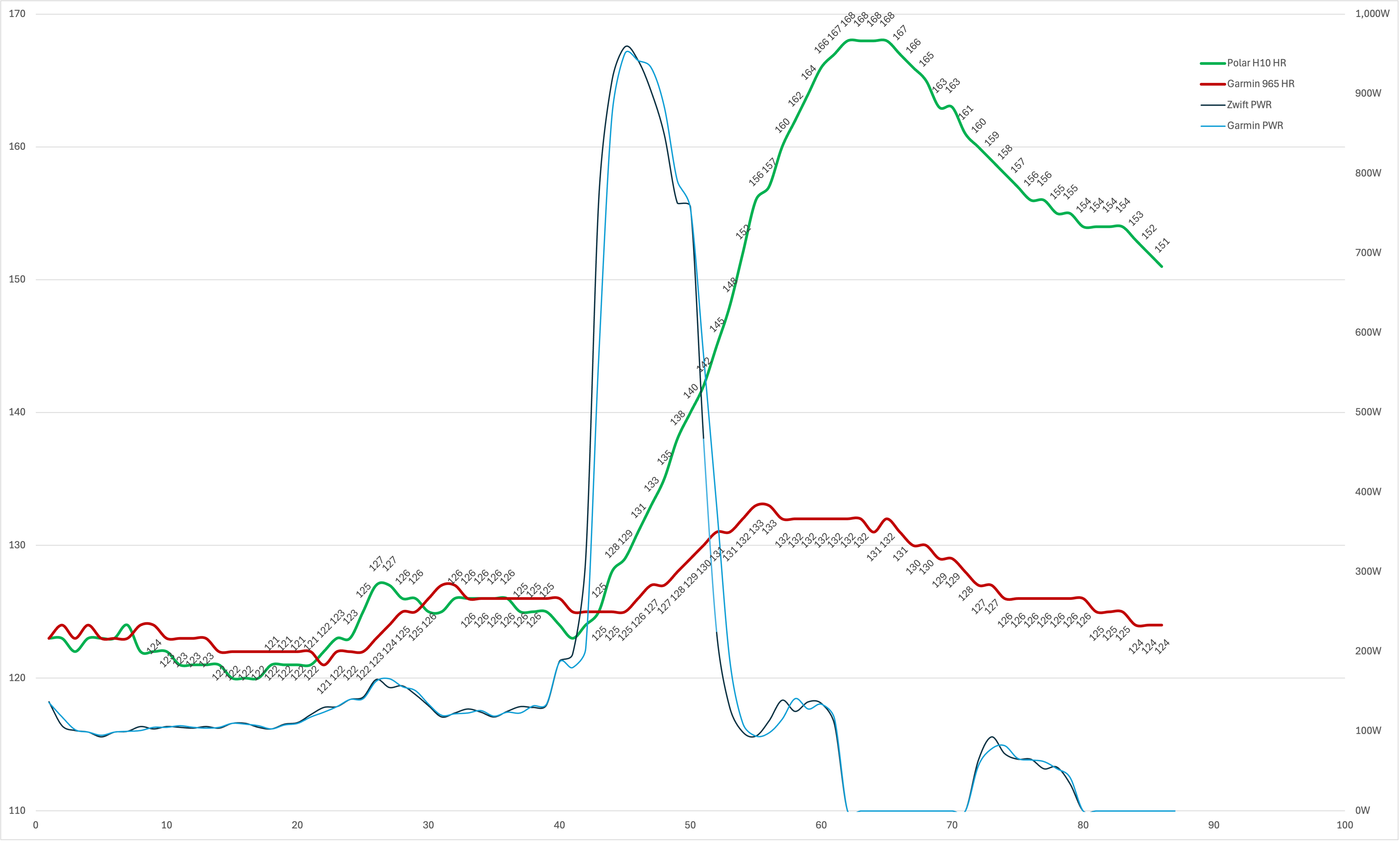Heart Rate Monitors Don't Lie (But Your Wrist Might)
 The moment my Garmin’s wrist HR (red) realised it forgot to train for this sprint.
The moment my Garmin’s wrist HR (red) realised it forgot to train for this sprint.
I’ll admit it: I bought the Polar H10 because a study said it was 99% accurate, and and I can that it picks up data way quicker.. I just had to be sure so after more than six months of wearing a chest strap like some kind of cyborg, here’s the truth about wrist-based heart rate tracking:
When Wrist HR Works
- Zone 2 rides/runs: Nearly identical to the Polar. If you’re just cruising, your wrist is fine.
- Daily metrics: Resting HR, sleep data, no problem.
When It Doesn’t
- Intervals? The graph says it all. Wrist HR takes ages to catch up (if it even does!).
- Quick spikes? By the time it catches up, you’re already wheezing.
Accurate Data Whout Spending £££
Turns out, you don’t need to spend £70 on a chest strap. I’ve been testing a £20 Coospo H9Z from AliExpress (spoiler: it’s shockingly good), and I’ll pit it against the Polar in my next post. Because nothing says “serious athlete” like bargain-hunting for sensors.
Bottom line: If you care about accuracy during hard efforts, strap something to your chest. Otherwise, enjoy the convenience - and the lies.
Also if you noticed on the graph there are 2 more lines. I wanted to see the difference (if any) between the power reported by my Wahoo Kickr V5 and my crank based powermeter, 4iii PRECISION 3. Good news. All the same.